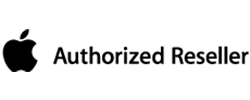March 05, 2024
How Federal Agencies Can Provide an Optimal Digital Experience
To optimize the digital experience, agencies must consider the needs of both remote and in-office workers.
When it comes to delivering a seamless digital experience, federal agencies face many of the same demands and challenges as organizations across the private sector. Users both internal and external expect a seamless experience that provides convenience along with reliable and secure access — just like in their personal lives.
However, agencies also have additional considerations when it comes to the digital experience. Working remotely doesn’t necessarily mean working from home: Some federal employees need secure access when working from international or military locations. Others require remote access to collaborate with colleagues across disparate areas. And many rely on access to highly sensitive legal data. Connectivity is essential, and security is paramount.
Despite the additional obstacles, strategic planning can enable agencies to deliver the kind of digital experience their users demand without putting employees and citizens (or their data) at risk.
CDW can empower your digital workforce, anywhere and anytime.
When it comes to delivering a seamless digital experience, federal agencies face many of the same demands and challenges as organizations across the private sector. Users both internal and external expect a seamless experience that provides convenience along with reliable and secure access — just like in their personal lives.
However, agencies also have additional considerations when it comes to the digital experience. Working remotely doesn’t necessarily mean working from home: Some federal employees need secure access when working from international or military locations. Others require remote access to collaborate with colleagues across disparate areas. And many rely on access to highly sensitive legal data. Connectivity is essential, and security is paramount.
Despite the additional obstacles, strategic planning can enable agencies to deliver the kind of digital experience their users demand without putting employees and citizens (or their data) at risk.
CDW can empower your digital
workforce, anywhere and anytime.

Federal agencies are at something of a crossroads when it comes to their employee experience. Over the past several years, mission leaders and IT professionals have worked to implement systems designed to enable effective distributed work, whether remote or hybrid. However, in 2023, the Office of Management and Budget urged agencies to curtail telework and bring more employees back to the physical office.
“The guidance … directs agencies to refresh their work environment plans and policies—with the general expectation that agency headquarters will continue to substantially increase in-person presence in the office,” writes Jason Miller, OMB’s deputy director for management, in a blog post accompanying the memo. “Workplace flexibilities will continue to be an important tool for ensuring agencies are able to retain and compete for top talent in the marketplace. Because the federal government is a vast organization, there is no one-size-fits-all approach.”
68%
The percentage of respondents who think that their organizations’ business leaders are familiar with the cybersecurity risks they face
Source: Cisco, "Employees are ready for hybrid work, are you? Cisco Global Hybrid Work Study 2022,” April 2022
While this guidance paints a somewhat hazy picture of the future, two things are clear: 1) Most agencies need to continue to provide some form of workplace flexibility to compete for employees; and 2) agencies need tools, systems and processes that prepare them to meet their missions in any scenario.
Whether they’re working at home, in the office or in a hybrid fashion, employees desire a seamless, intuitive digital experience. In addition, according to Riverbed, 68 percent of leaders believe that younger workers will consider leaving their organizations if they fail to meet their digital experience needs.
What does this mean in practice? At a minimum, meeting expectations for the digital employee experience requires agencies to supply their workers with modern devices, effective collaboration tools, robust connectivity and comprehensive security solutions. It also means providing remote access solutions that enable collaboration and communication between colleagues across locations.
In short: Agencies must equip employees to do their jobs from anywhere by providing them with a technology experience that will help them to succeed in any setting.
A New Way to Hybrid Work
Hybrid work has evolved from the early stages of the pandemic, and agencies are now grappling with how to drive innovation and productivity.
Many agencies now have multiple platforms they use for collaboration, both internally and with the citizens they serve, which can lead to friction for users, increase costs and complicate management.
Agencies and citizens are increasingly moving to multimodal forms of communication, and automation tools are helping to streamline internal processes and interactions with external users.
As agencies evolve their hybrid work setups, they must ensure that the in-office technology experience is exemplary and doesn’t dissuade employees from coming in.
Creating a Top-Notch Digital Employee Experience
Federal agencies are at something of a crossroads when it comes to their employee experience. Over the past several years, mission leaders and IT professionals have worked to implement systems designed to enable effective distributed work, whether remote or hybrid. However, in 2023, the Office of Management and Budget urged agencies to curtail telework and bring more employees back to the physical office.
“The guidance … directs agencies to refresh their work environment plans and policies—with the general expectation that agency headquarters will continue to substantially increase in-person presence in the office,” writes Jason Miller, OMB’s deputy director for management, in a blog post accompanying the memo. “Workplace flexibilities will continue to be an important tool for ensuring agencies are able to retain and compete for top talent in the marketplace. Because the federal government is a vast organization, there is no one-size-fits-all approach.”
While this guidance paints a somewhat hazy picture of the future, two things are clear: 1) Most agencies need to continue to provide some form of workplace flexibility to compete for employees; and 2) agencies need tools, systems and processes that prepare them to meet their missions in any scenario.
68%
The percentage of respondents who think that their organizations’ business leaders are familiar with the cybersecurity risks they face
Source: Cisco, "Employees are ready for hybrid work, are you? Cisco Global Hybrid Work Study 2022,” April 2022
Whether they’re working at home, in the office or in a hybrid fashion, employees desire a seamless, intuitive digital experience. In addition, according to Riverbed, 68 percent of leaders believe that younger workers will consider leaving their organizations if they fail to meet their digital experience needs.
What does this mean in practice? At a minimum, meeting expectations for the digital employee experience requires agencies to supply their workers with modern devices, effective collaboration tools, robust connectivity and comprehensive security solutions. It also means providing remote access solutions that enable collaboration and communication between colleagues across locations.
In short: Agencies must equip employees to do their jobs from anywhere by providing them with a technology experience that will help them to succeed in any setting.
A New Way to Hybrid Work
Hybrid work has evolved from the early stages of the pandemic, and agencies are now grappling with how to drive innovation and productivity.
Many agencies now have multiple platforms they use for collaboration, both internally and with the citizens they serve, which can lead to friction for users, increase costs and complicate management.
Agencies and citizens are increasingly moving to multimodal forms of communication, and automation tools are helping to streamline internal processes and interactions with external users.
As agencies evolve their hybrid work setups, they must ensure that the in-office technology experience is exemplary and doesn’t dissuade employees from coming in.
Hybrid Work and the Employee Experience: By the Numbers
<25%
The percentage of occupancy rate in mid-2023, for 17 agenceies. None of the agencies were more than half occupied1, 2
Sources: 1federalnewsnetwork.com, “With most agency headquarters at 25% capacity, ‘hard decisions’ coming for federal office holdings,” July 13, 2023; 2govexec.com, “White House calls on agencies to 'aggressively' reduce telework this fall,” Aug. 27, 2023
14%
The percentage of federal employees that have an approved agreement for full-time telework3
Source: 3thehill.com, “For feds, hybrid work policies should focus on delivering results for the public,” April 27, 2023
55%
The percentage of federal employees who participate in some form of hybrid work3
Source: 3thehill.com, “For feds, hybrid work policies should focus on delivering results for the public,” April 27, 2023
64%
The percentage of federal employees that say they’re satisfied with their current remote, hybrid or in-office working situations4
Source: 4federalnewsnetwork.com, “Survey: As agencies turn to hybrid work, many feds want more remote options,” Nov. 1, 2022
87%
The percentage, across industries, of decision-makers that say slow-running systems and apps, as well as outdated technology, are directly impacting performance5
Source: 5Riverbed, Global Digital Employee Experience (DEX) Survey 2023, September 2023
91%
The percentage, across industries, of decision-makers believe that they will need to provide more advanced digital experiences to adapt to the expectations of younger workers5
Source: 5Riverbed, Global Digital Employee Experience (DEX) Survey 2023, September 2023
Hybrid Work and the Employee Experience: By the Numbers
<25%
The percentage of occupancy rate in mid-2023, for 17 agenceies. None of the agencies were more than half occupied1, 2
Sources: 1federalnewsnetwork.com, “With most agency headquarters at 25% capacity, ‘hard decisions’ coming for federal office holdings,” July 13, 2023; 2govexec.com, “White House calls on agencies to 'aggressively' reduce telework this fall,” Aug. 27, 2023
14%
The percentage of federal employees that have an approved agreement for full-time telework3
Source: 3thehill.com, “For feds, hybrid work policies should focus on delivering results for the public,” April 27, 2023
55%
The percentage of federal employees who participate in some form of hybrid work3
Source: 3thehill.com, “For feds, hybrid work policies should focus on delivering results for the public,” April 27, 2023
64%
The percentage of federal employees that say they’re satisfied with their current remote, hybrid or in-office working situations4
Source: 4federalnewsnetwork.com, “Survey: As agencies turn to hybrid work, many feds want more remote options,” Nov. 1, 2022
87%
The percentage, across industries, of decision-makers that say slow-running systems and apps, as well as outdated technology, are directly impacting performance5
Source: 5Riverbed, Global Digital Employee Experience (DEX) Survey 2023, September 2023
91%
The percentage, across industries, of decision-makers believe that they will need to provide more advanced digital experiences to adapt to the expectations of younger workers5
Source: 5Riverbed, Global Digital Employee Experience (DEX) Survey 2023, September 2023
Some agencies have struggled to meet the elevated expectations people have of their digital experience. The user interface needs to be easy to use, intuitive and compatible with the technology being used across multiple locations. Meanwhile, agencies must ensure that remote workers are able to contribute and participate in the same ways their in-office counterparts are.
SUBPAR OFFICE EXPERIENCE: If agencies believe that having workers in the office leads to more spontaneous collaboration and higher productivity, then the in-office technology experience needs to be better than what users can get at home. Because remote work gives employees flexibility and convenience, the in-office IT must be superior, not subpar.
INCOMPATIBLE SOFTWARE: In the office, workers might collaborate on one software platform while a conference room is set up to work best with another. That can cause IT headaches and delays in communication and potentially deter employees from coming into the office.
Click Below to Continue Reading
DIGITAL WHITEBOARDS: Some offices are now equipped with digital whiteboards that allow users to easily brainstorm and sketch out ideas using digital screens to incorporate data from web and productivity applications. However, agencies must make sure all participants can access the technology and contribute meaningfully from any location.
STANDARDIZED EXPERIENCES: As agencies look to integrate in-office and remote workers more seamlessly, they should standardize their software and hardware offerings onto a smaller number of platforms. Streamlining can help reduce costs and enhance security by limiting the number of products that must be patched, maintained and monitored.
REMOTE DEVICE SETUP: Many agencies now have virtual IT help desks that can set up employees’ devices remotely and ship them to remote users. The ability to set up devices remotely also enables IT teams to support applications running on users’ personal mobile devices and ensure that they remain secure.
AUTOMATED TOOLS: By leveraging artificial intelligence tools such as chatbots, agencies can shrink wait times and improve accuracy, delivering a superior experience to constituents. Automated tools can handle routine inquiries and enable workers to focus on the most critical calls. However, many organizations lack the knowledge and skills to take full advantage of these capabilities.
Agencies must simultaneously provide hybrid workers with uninterrupted access and strong security, which can become a challenge, as IT departments must work to minimize connection disruptions while maintaining security. Connectivity is critical to ensuring that workers can access the applications they need and collaborate effectively. At the same time, IT and mission leaders must think about security differently in hybrid environments, since distributed workforces can expand the attack surface. That’s why zero-trust security is critical to enabling secure, continually authenticated access to enterprise data. Meanwhile, with users connecting to federal networks through many devices — some of which may be personal devices — agencies must focus on ensuring that all devices are patched and secured. It is also important to certify that decommissioned devices are properly managed and security standards are met when devices are retired.
FUNDAMENTAL CONNECTIVITY: For hybrid work to be successful, both for in-office users and remote workers looking to connect to enterprise networks, organizations must guarantee that they have instantaneous, robust, reliable and secure connectivity options for users, usually with multiple backup network connectivity options.
THE NEED FOR ZERO TRUST: In hybrid work environments, agencies can no longer simply build cybersecurity protections around their internal networks. They must employ zero-trust security architectures to ensure that data is secured no matter where it resides. Zero trust also enables organizations to continually authenticate remote workers seeking to access government data.
DEVICE MANAGEMENT: Since data can be accessed, in theory, on any employee device, agencies must remotely manage devices and potentially sandbox them to guard against security threats. Workers can also use web apps to securely access company information if necessary.
GETTING THE MOST OUT OF DEVICES: Since the workforce is distributed, agencies must keep employees’ devices updated with security patches so that they can continue to access federal applications. Employee devices that have been decommissioned also must be processed and wiped, and agencies must get certifications that the devices have been secured.
Click Below to Continue Reading
IT Security for Hybrid Workers
For distributed workforces, agencies are learning that what worked for them in terms of cybersecurity before the pandemic is no longer operative. As a result, mission and IT security leaders have been rethinking their network security strategies and cybersecurity investments overall to ensure that their employees are secure no matter where they’re working.
78%
The percentage of respondents who believe that cybersecurity is critical to making hybrid work safe
65%
The percentage of respondents who say that their organizations currently have the right cybersecurity capabilities and protocols in place
62%
The percentage of respondents who think all employees across their organizations understand the cyber risks involved with hybrid work
Source: Cisco, "Employees are ready for hybrid work, are you? Cisco Global Hybrid Work Study 2022,” April 2022
The truth is that the digital employee experience is not really an end in itself. Rather, it creates an environment that enables federal agencies to pursue and achieve their most important goals. As a natural consequence of building out an excellent user experience for employees, agencies will embrace automation, optimize their IT environments and boost productivity. The technology investments agencies make help to meet the expectations and requirements of employees, citizens and regulators alike. Ultimately, these efforts should position agencies to attain the following benefits:
Compliance with Federal Remote Access Guidelines: Agencies face a host of federal regulations regarding remote access, issued by the Cybersecurity and Infrastructure Security Agency, the National Institute of Standards and Technology, and others. A centralized digital experience initiative will help agencies to eliminate shadow IT by equipping workers with remote access tools that are approved and secure.
Employee Satisfaction: According to Gartner, only 13 percent of employees are “fully satisfied” with the employee experience at their organizations, across industries. At a time when competition for top talent is stiff, effective digital tools can help agencies to attract and retain employees who might otherwise choose roles in the private sector. The digital employee experience is especially important to younger workers, who largely expect technology to “just work.”
Click Below to Continue Reading
Cross-Site Collaboration: Many agencies operate sites around the country, or even around the world. Hybrid work tools such as video collaboration solutions make it possible for employees at these various sites to connect in ways that would have been almost impossible only a decade ago. In addition to joining video meetings, employees at remote sites can connect through real-time co-authoring, persistent chat and other collaboration tools that have become central to both the remote work and in-office experiences.
Support for Hybrid Meetings: While nearly all organizations became proficient at holding remote meetings during the COVID-19 pandemic, many still struggle to support hybrid meetings (where some participants join remotely, but others are in the physical office). With the right mix of displays, cameras and software, agencies can conduct hybrid meetings that offer an excellent experience for all employees, no matter how they join.
Enhanced Mission Focus: A seamless digital employee experience makes workers more productive and efficient, and it also reduces the amount of time IT departments must spend troubleshooting outdated and incompatible tech tools. As a result, employees can spend more time on mission-critical activities, redirecting their focus toward strategic objectives and service delivery improvements.
Improved Citizen Trust: For agencies that directly interact with the public, the digital experience extends to citizen services. In fact, in September 2023, OMB issued guidance to agencies to enhance the digital experience of citizens by improving websites and digital services. “Digital is now the default way the public interacts with their government,” reads the accompanying memo from the White House. “More than ever, digital experience is central to Federal agencies’ mission delivery and our government’s ability to serve the American people.”
Some agencies have struggled to meet the elevated expectations people have of their digital experience. The user interface needs to be easy to use, intuitive and compatible with the technology being used across multiple locations. Meanwhile, agencies must ensure that remote workers are able to contribute and participate in the same ways their in-office counterparts are.
SUBPAR OFFICE EXPERIENCE: If agencies believe that having workers in the office leads to more spontaneous collaboration and higher productivity, then the in-office technology experience needs to be better than what users can get at home. Because remote work gives employees flexibility and convenience, the in-office IT must be superior, not subpar.
INCOMPATIBLE SOFTWARE: In the office, workers might collaborate on one software platform while a conference room is set up to work best with another. That can cause IT headaches and delays in communication and potentially deter employees from coming into the office.
Click Below to Continue Reading
DIGITAL WHITEBOARDS: Some offices are now equipped with digital whiteboards that allow users to easily brainstorm and sketch out ideas using digital screens to incorporate data from web and productivity applications. However, agencies must make sure all participants can access the technology and contribute meaningfully from any location.
STANDARDIZED EXPERIENCES: As agencies look to integrate in-office and remote workers more seamlessly, they should standardize their software and hardware offerings onto a smaller number of platforms. Streamlining can help reduce costs and enhance security by limiting the number of products that must be patched, maintained and monitored.
REMOTE DEVICE SETUP: Many agencies now have virtual IT help desks that can set up employees’ devices remotely and ship them to remote users. The ability to set up devices remotely also enables IT teams to support applications running on users’ personal mobile devices and ensure that they remain secure.
AUTOMATED TOOLS: By leveraging artificial intelligence tools such as chatbots, agencies can shrink wait times and improve accuracy, delivering a superior experience to constituents. Automated tools can handle routine inquiries and enable workers to focus on the most critical calls. However, many organizations lack the knowledge and skills to take full advantage of these capabilities.
Agencies must simultaneously provide hybrid workers with uninterrupted access and strong security, which can become a challenge, as IT departments must work to minimize connection disruptions while maintaining security. Connectivity is critical to ensuring that workers can access the applications they need and collaborate effectively. At the same time, IT and mission leaders must think about security differently in hybrid environments, since distributed workforces can expand the attack surface. That’s why zero-trust security is critical to enabling secure, continually authenticated access to enterprise data. Meanwhile, with users connecting to federal networks through many devices — some of which may be personal devices — agencies must focus on ensuring that all devices are patched and secured. It is also important to certify that decommissioned devices are properly managed and security standards are met when devices are retired.
FUNDAMENTAL CONNECTIVITY: For hybrid work to be successful, both for in-office users and remote workers looking to connect to enterprise networks, organizations must guarantee that they have instantaneous, robust, reliable and secure connectivity options for users, usually with multiple backup network connectivity options.
THE NEED FOR ZERO TRUST: In hybrid work environments, agencies can no longer simply build cybersecurity protections around their internal networks. They must employ zero-trust security architectures to ensure that data is secured no matter where it resides. Zero trust also enables organizations to continually authenticate remote workers seeking to access government data.
DEVICE MANAGEMENT: Since data can be accessed, in theory, on any employee device, agencies must remotely manage devices and potentially sandbox them to guard against security threats. Workers can also use web apps to securely access company information if necessary.
GETTING THE MOST OUT OF DEVICES: Since the workforce is distributed, agencies must keep employees’ devices updated with security patches so that they can continue to access federal applications. Employee devices that have been decommissioned also must be processed and wiped, and agencies must get certifications that the devices have been secured.
Click Below to Continue Reading
IT Security for Hybrid Workers
For distributed workforces, agencies are learning that what worked for them in terms of cybersecurity before the pandemic is no longer operative. As a result, mission and IT security leaders have been rethinking their network security strategies and cybersecurity investments overall to ensure that their employees are secure no matter where they’re working.
78%
The percentage of respondents who believe that cybersecurity is critical to making hybrid work safe
65%
The percentage of respondents who say that their organizations currently have the right cybersecurity capabilities and protocols in place
62%
The percentage of respondents who think all employees across their organizations understand the cyber risks involved with hybrid work
Source: Cisco, "Employees are ready for hybrid work, are you? Cisco Global Hybrid Work Study 2022,” April 2022
The truth is that the digital employee experience is not really an end in itself. Rather, it creates an environment that enables federal agencies to pursue and achieve their most important goals. As a natural consequence of building out an excellent user experience for employees, agencies will embrace automation, optimize their IT environments and boost productivity. The technology investments agencies make help to meet the expectations and requirements of employees, citizens and regulators alike. Ultimately, these efforts should position agencies to attain the following benefits:
Compliance with Federal Remote Access Guidelines: Agencies face a host of federal regulations regarding remote access, issued by the Cybersecurity and Infrastructure Security Agency, the National Institute of Standards and Technology, and others. A centralized digital experience initiative will help agencies to eliminate shadow IT by equipping workers with remote access tools that are approved and secure.
Employee Satisfaction: According to Gartner, only 13 percent of employees are “fully satisfied” with the employee experience at their organizations, across industries. At a time when competition for top talent is stiff, effective digital tools can help agencies to attract and retain employees who might otherwise choose roles in the private sector. The digital employee experience is especially important to younger workers, who largely expect technology to “just work.”
Click Below to Continue Reading
Cross-Site Collaboration: Many agencies operate sites around the country, or even around the world. Hybrid work tools such as video collaboration solutions make it possible for employees at these various sites to connect in ways that would have been almost impossible only a decade ago. In addition to joining video meetings, employees at remote sites can connect through real-time co-authoring, persistent chat and other collaboration tools that have become central to both the remote work and in-office experiences.
Support for Hybrid Meetings: While nearly all organizations became proficient at holding remote meetings during the COVID-19 pandemic, many still struggle to support hybrid meetings (where some participants join remotely, but others are in the physical office). With the right mix of displays, cameras and software, agencies can conduct hybrid meetings that offer an excellent experience for all employees, no matter how they join.
Enhanced Mission Focus: A seamless digital employee experience makes workers more productive and efficient, and it also reduces the amount of time IT departments must spend troubleshooting outdated and incompatible tech tools. As a result, employees can spend more time on mission-critical activities, redirecting their focus toward strategic objectives and service delivery improvements.
Improved Citizen Trust: For agencies that directly interact with the public, the digital experience extends to citizen services. In fact, in September 2023, OMB issued guidance to agencies to enhance the digital experience of citizens by improving websites and digital services. “Digital is now the default way the public interacts with their government,” reads the accompanying memo from the White House. “More than ever, digital experience is central to Federal agencies’ mission delivery and our government’s ability to serve the American people.”
CDW can help your organization create a new way
of working that drives mission success.
Marcus Friend, Eric Holstein, Joe Lazzaro, Scott Perry
CDW Experts







